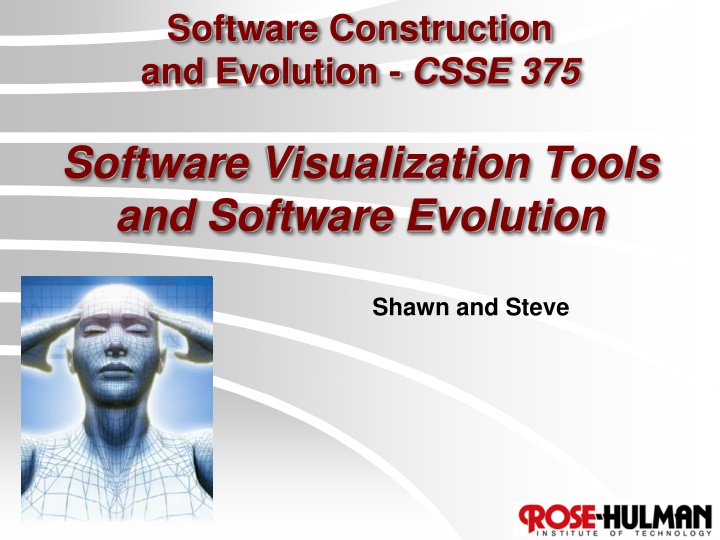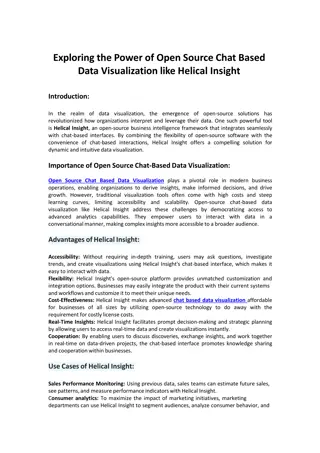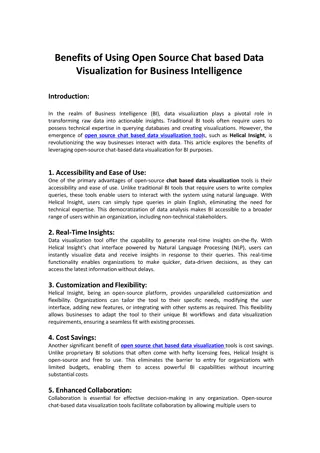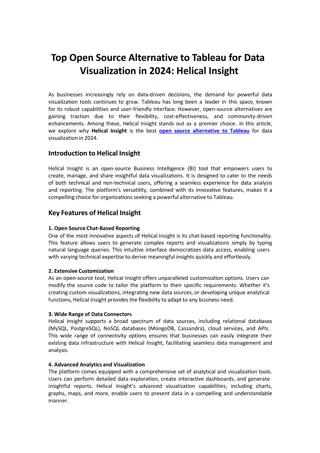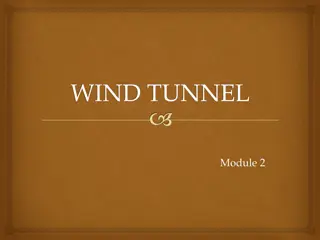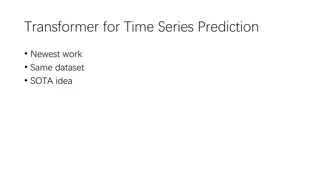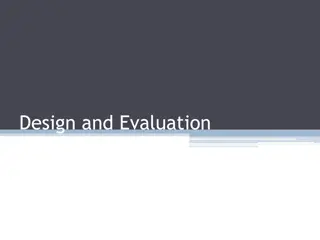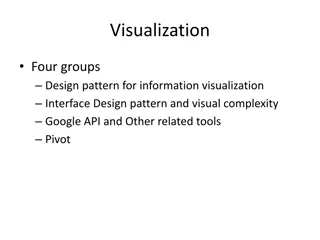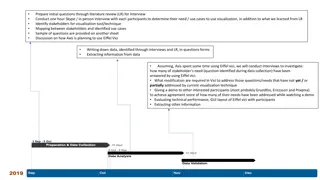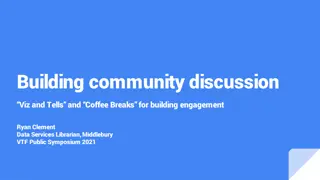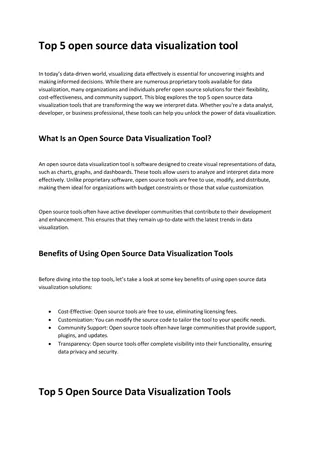Software Visualization Tools and Techniques
Importance of visualizing software evolution, feedback systems, and cultural change in a software ecosystem. Learn about various tools like Gource, jGRASP, Imagix 4D, and more that aid in software visualization and understanding. Understand the challenges of implementing cultural change in software development.
Download Presentation

Please find below an Image/Link to download the presentation.
The content on the website is provided AS IS for your information and personal use only. It may not be sold, licensed, or shared on other websites without obtaining consent from the author.If you encounter any issues during the download, it is possible that the publisher has removed the file from their server.
You are allowed to download the files provided on this website for personal or commercial use, subject to the condition that they are used lawfully. All files are the property of their respective owners.
The content on the website is provided AS IS for your information and personal use only. It may not be sold, licensed, or shared on other websites without obtaining consent from the author.
E N D
Presentation Transcript
Software Construction and Evolution - CSSE 375 Software Visualization Tools and Software Evolution Shawn and Steve
Why Do We Visualize Software & stuff? Stuff Above: XKCD comic characters as lines that converge in time, as they share scenes. Q1 2
Why Do We Visualize Software & stuff? Software Above: Gource, from https://www.youtube.com/watch?v=E5xPMW5fg48. Q1 3
DEC FUSE Program Visualizer 6
A little more on jGRASP Q2 Control Structure Diagram shows Control in Code 8
Imagix 4D 11
Software Evolves in an Ecosystem Largely based on the concept of positive and negative feedback systems existing in the software environment Examples of feedback systems: Users Management Developers Government Business Change System Technology Change Cultural Change Q3 18
Cultural change is hard! Change always takes longer than expected, to take hold This impacts acceptability of your new products. We d like to think better ideas win out on their own merits. Not that easy why? 19
Enterprise Architecture Perspective Business Strategies BUSINESS ARCHITECTURE TECHNOLOGY ARCHITECTURE Tech- nology Model Domain1 Domain2 : Domain#N IT Steering Committee Technology Industry Trends Business Industry Trends Business Model IT Infrastructure Organization Architecture Information Value Chain Information Corporate Decision Table Domain1 Domain2 : Domain#N Program Management Office Application Portfolio Business Processes Technology Strategies 20
Software Evolution - Some History Lazlo Balady and Manny Lehman worked for IBM studying the properties of software Focused on software change and observed evolution patterns Started with three Laws in 1968-74 and evolved to eight by 1997 Empirically demonstrated for 2 systems: OS/360 (IBM mainframe OS in the 1960 s) Logica FW (a financial transaction system) Q4 21
Key Software Evolution Definitions (1 of 2) Two main types of software: S and E Types S-type software: those addressing a problem with a computational solution in an abstract and closed domain (i.e., mathematical) Example: floating point package may be judged correct via the IEEE standard for floating point Q5 22
Key Software Evolution Definitions (2 of 2) E-type software: produced because it satisfies some real world need and so is forced to evolve as the reality changes Example: embedded code must fit the hardware it is placed in and must change if the hardware is changed This represents the majority of software Q6 23
Software Evolution 1. The Law of Continuing Change (1974) 2. The Law of Increasing Complexity (1974) 3. The Law of Self Regulation (1974) 4. The Law of Conservation of Organizational Stability (1980) 5. The Law of Conservation of Familiarity (1980) 6. The Law of Continuing Growth (1980) 7. The Law of Declining Quality (1996) 8. The Feedback System Law (1996) Source: Lehman, M., et al, Metrics and Laws of Software Evolution The Nineties View, Proceedings of the 4th International Software Metrics Symposium (METRICS '97), IEEE, 1997, can be downloaded from: http://www.ece.utexas.edu/~perry/work/papers/feast1.pdf 24
Discussion Groups First group Lead Laws 1 and 2 Second group Lead Laws 3 and 4 Third group Lead Laws 4 and 6 Fourth group Lead Laws 7 and 8 Question 1: What does the law have to do with contemporary or traditional Software? Question 2: Is this different for software developed using Agile approaches? 25
Law 1 - Continuing Change An E-type (evolutionary type) program that is used must be continually adapted else it becomes progressively less satisfactory. This is due in part to the fact that the software never exactly matches the desired operational domain (the Software Uncertainty Principle ). Q7 26
Law 2 Increasing Complexity As a program is evolved its complexity increases unless work is done to maintain or reduce it. Related to the Second Law of Thermodynamics If effort is expended to combat this (through re-engineering and other techniques) this means less effort for new functionality. Q8 27
Law 3 Self Regulation The program evolution process is self regulating with close to normal distribution of measures of product and process attributes. From Lehman s paper: Checks and balances will have been established by management to ensure that operational rules are followed and organizational goals are met [This is] one example of feedback driven growth and stabilization mechanisms [They] establish a disciplined dynamics whose parameters are, in least in part normally distributed. 28
Law 4 Conservation of Organizational Stability Invariant Work Rate: The average effective global activity rate [total effort expended] on an evolving system is invariant over the product lifetime. On the surface, it doesn t make sense. However, various forces are at work that often counteracts attempts to increase productivity. 29
Law 5 Conservation of Familiarity During the active life of an evolving program, the content of successive releases is statistically invariant. From Lehman s paper: One of the factors that determines the progress of a software development is the familiarity of all involved with its goals. The more changes & additions [in a] particular release, the more difficult is for all concerned to be aware, to understand and to appreciate what is required of them The larger the work package the more challenging mastery of the matter to be acquired. 30
Law 6 Continuing Growth Functional content of a program must be continually increased to maintain user satisfaction over its lifetime. Various factors mean that user demands for more functionality will increase over time, and thus the functional content must also increase Q9 31
Law 7 Declining Quality E-type programs will be perceived as of declining quality unless rigorously maintained and adapted to a changing operational environment. Otherwise, the system is perceived as older and less useful and less valuable. 32
Law 8 Feedback System E-type programming processes constitute multi-loop, multi-level feedback systems and must be treated as such to be successfully improved. Multi-loop means that it is an iterative process Multi-level means it occurs in more than one aspect of the software and its documentation 33
